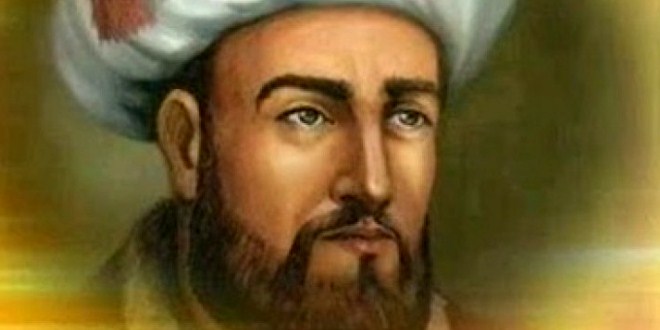Al-Ghazali, known as the “hujjat al-Islam” (and he was the only scholar who carried this title in the classical era) was a prominent Islamic figure in Islamic history. Al-Ghazali, known also as Imam Ghazali, was known as such because he was the one who defied the arguments of the philosophers, especially Ibn Sina (d. 1037) and Al-Farabi (d. 950). In the view of Al-Ghazali, the arguments of the philosophers who tried to resolve between revelation and philosophy may risk a hidden danger – endangering the integrity of the Islamic faith according to Ahlussunnah wal Jamaah (Sunni).
Since he was credited in saving the Sunni faith from the threat of philosophical approach, he was awarded by the honorific title hujjat al-Islam. The title means: the proof of Islam. The exact meaning is that Al-Ghazali represented the Sunni argument, since Shia does not have a big problem with philosophical approach.
This writing will not review Al-Ghazali’s contributions, but to show an interesting fact which I believe less acknowledged by the Muslim community itself, including the pesantrens among NU (Nahdlatul Ulama, the major Muslim community in Indonesia) who recognized Al-Ghazali as an idolized figure. We know, NU put Al-Ghazali as a central figure in Sufism, Islamic mysticism.
The facts are as follows. Even though Al-Ghazali was known as the hujjat al-Islam, the works which caused him to obtain this title were rarely, or even completely, not studied in the Islamic madrasas either in Indonesia or in other worlds. Al-Ghazali’s works that most widely studied are those related to the themes of Sufism. Just mention the following books: Bidayat al-Hidayah, Minhaj al-‘Abidin, and (this is the most popular of all his popular works) Ihya Ulum al-Din.
The works of Imam Ghazali in debating philosophers are rarely read. For example: Maqasid al-Falasifah and Tahafut al-Falasifah. In fact, these works awarded him the title of hujjat al-Islam. In other words, Al-Ghazali was attributed as the hujjat al-Islam, but his ideas which led to this title were less recognized. Furthermore, Al-Ghazali’s works on Sufism using a philosophical approach are also rarely read in the pesantren environment. For example: Misykat al-Anwar, Kimiya ‘al-Sa’adah and (although scholars are doubt to credit this work to Al-Ghazali) Ma’arij al-Quds.
Al-Ghazali did cover the two worlds and row between. On one hand, he approached Sufism by a traditional approach, so-called Tasawuf Suluki or ethical mysticism. The approach appeared in his three main books: Bidayat al-Hidayah, Minhaj al-Abidin, and Ihya ‘Ulum al-Din. These three books emphasized on the practice of sufism as a practical for approaching (taqarrub) to Allah through worship and cleansing of heart (tazkiyah).
On the other hand, Al-Ghazali also tried to provide Sufism with a philosophical language and, perhaps, aimed at people who had a tendency and aversion to philosophy. This can be seen in his works such as Misykat al-Anwar and Kimiya ‘al-Sa’adah. In these latter works, Al-Ghazali presented Sufism not as practice of tariqat, instead, as a practice of reflection. This represents “philosophical mysticism”.
In Tahafut al-Falasifah (the incoherence of the philosophers) Al-Ghazali went against philosophy, while in Misykat al-Anwar he applied Ibn Sina’s philosophical approach in examining Sufism themes. This face of “philosophical” Ghazali is indeed less popular among Sunni Muslims. Muslims community preferred, from the past until now, the “mystical” Ghazali. Al-Ghazali al-mutasawwif (the mystic), not Al-Ghazali al-failasuf (the philosopher).
The fact that Al-Ghazali moved between the two worlds – the world of Sufism and the world of philosophy – is rarely recognized by the majority of Muslims today.
It is perceivable if we examine through sociological perspective. The commoners, the people Ghazali referred as al-’awam, mostly attracted to a religion of heart, a mode of religion that touches emotions. This is the type of religion Muslim “televangelist” often performed on TV screens. I wrote this not in the sense of ridicule. Sociologically, in any era, this mode of religion is able to attract massive audiences and that is the fact.
While philosophical mode of religions that use a philosophical approach is less attractive for the commoners. This mode of religion does not touch the heart and emotions. Instead, the philosophy required people to reason. This is a dry side of religion, does not spark any feelings and emotion. This mode of religion does not touch us to cry out of our emotion.
What the common people need is an inspiring religion. This explained Ihya ‘Ulum al-Din made the most popular book among other works of Al-Ghazali. The reason is very clear. Such work touches the heart, moves emotions, and creates a deep feeling of emotion.
Al-Ghazali himself was not a fully mono-dimensional, one-sided figure. (Is there any human who is mono-dimensional, except perhaps in the analysis of Herbert Marcuse: One Dimensional Man?). There are two dimensions in Al-Ghazali at once: ethical attraction, and from here the works of Sufism Suluki was born; and philosophical attraction. From the latter, works such as Misykat al-Anwar was born.
In other words: we must see Al-Ghazali as a whole despite the two face we talk about. The mystical Ghazali as the author of Ihya’ with strong ethical Sufism tendencies; and the philosophical Ghazali as author of Misykat with a more prominent philosophical tendency.
Simply, we can use the following terms. There are two faces of Ghazali; the poetic Ghazali and prosaic Ghazali. Or the lyrical Ghazali and epic Ghazali. Or perhaps you have your own terms to describe the complex figure of Al-Ghazali.
Our pray and honor for The grand scholar of Khurasan!
![Islami[dot]co](https://en.islami.co/wp-content/themes/jambualas/images/logo.png)


